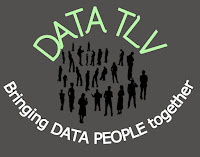Over time you learn more things and do better (DATA TLV puzzles and excitement)

I took the first sip from my morning coffee when the last summit session had started, somewhere around 15:00. I heavily sank to a sofa and realized that this is the first time I had a chance to sit down today. Another organizer was sitting nearby with the exact "stick a fork in me, I am done" look, staring nowhere. "Oh, I am so tired" - that was my 18-year-old nephew Sonya anchored on the other side of the sofa. She had helped us with registrations and timekeeping in classes and has absorbed all speakers' disappointment with outdated presentation equipment. "Most speakers finish before their time", she said with an exhausted look. "Very smart and intelligent people. I didn't understand anything they talked about." I wish we knew how to make sure the summit meets everyone's expectations. Every sponsor wants to deliver a session. The more sponsored sessions mean fewer slots for community speakers sessions. The toughest part of ...

